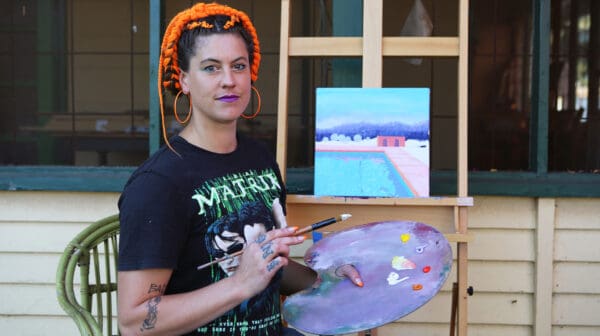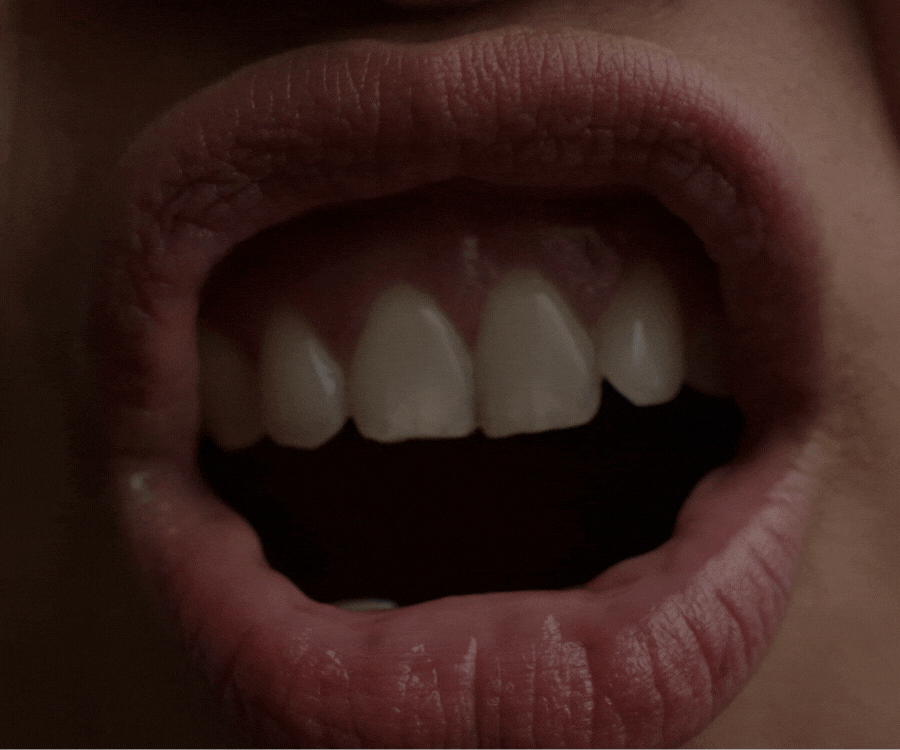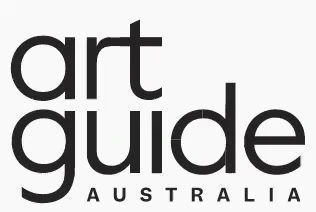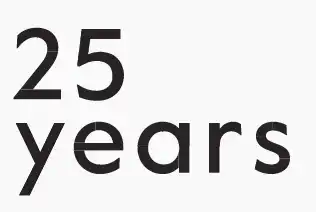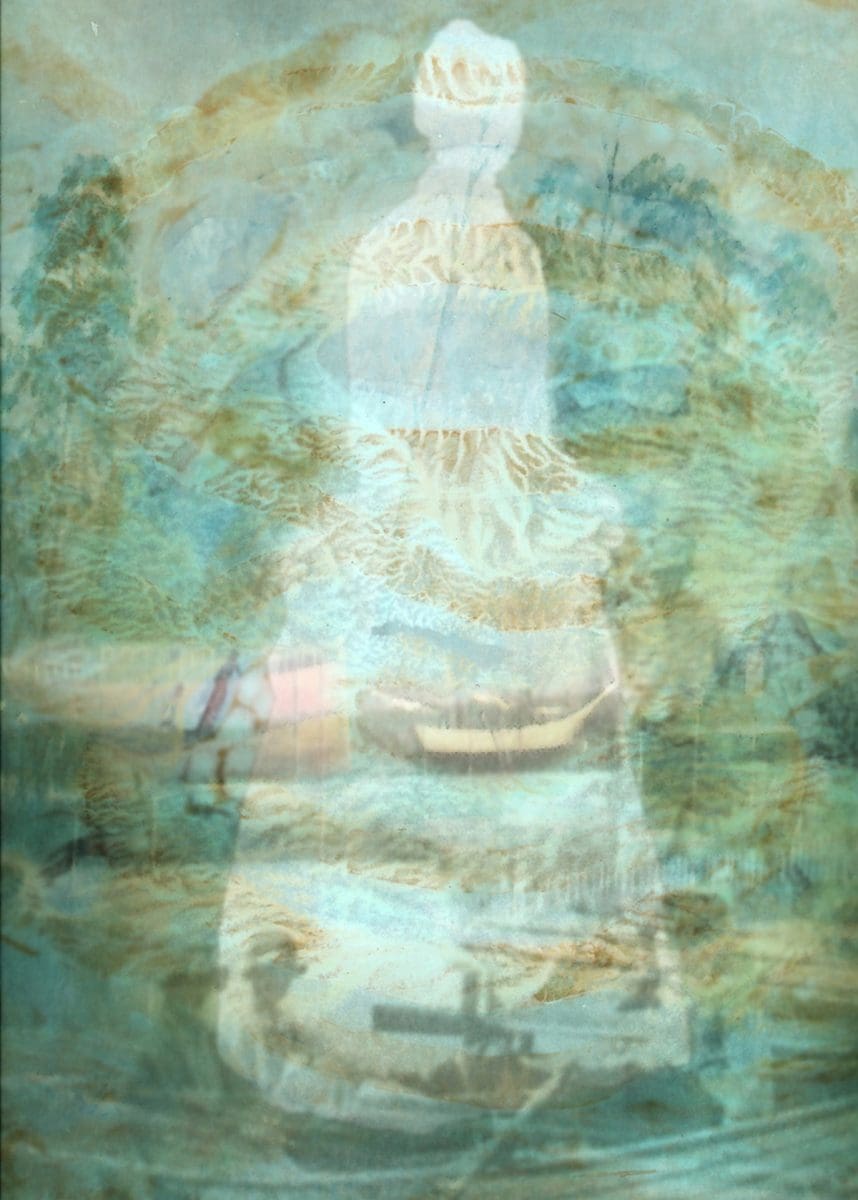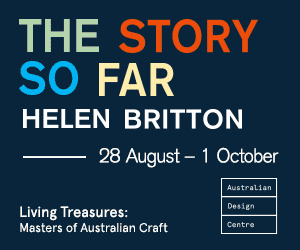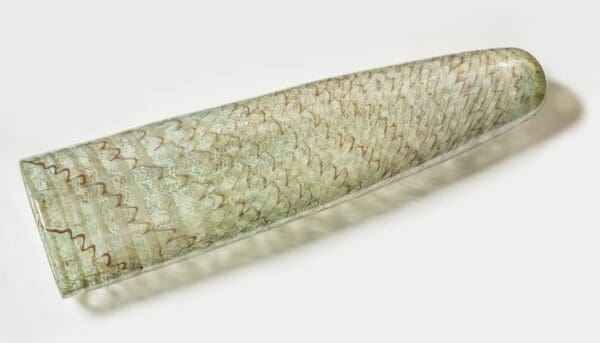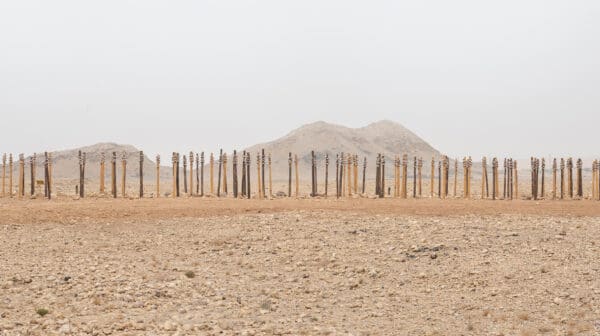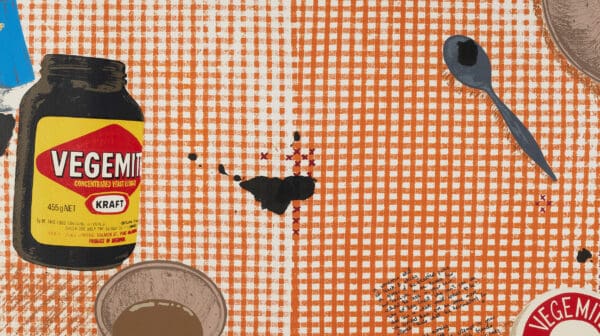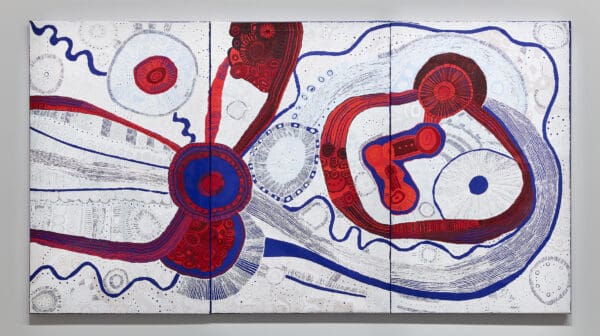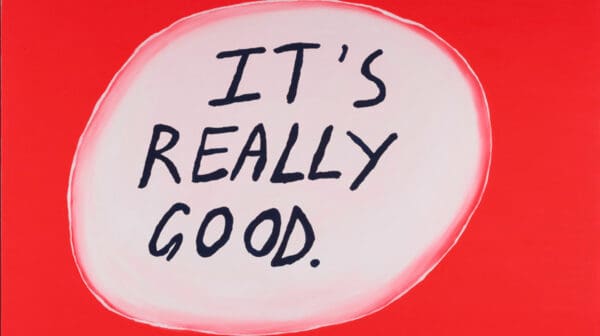Women in maritime history have something in common with the structure of icebergs. Their presence is marked only by what skims the surface. Explore the depths and the reality is clear: what we see is only part of the story.
Responding to the absence of female voices in Tasmanian maritime history, artist Anne Morrison has spent time trawling the collection of the Bass Strait Maritime Centre (BSMC) to produce Beneath the Waterline, a series of paintings which reflect on the lives of women who have been inextricably connected to oceans, rivers and waterways.
Beneath the Waterline is included in the line-up of Ten Days on the Island, a biennial festival featuring music, theatre, dance and visual arts events scattered across Tasmania.
The show takes place in Devonport, a port city nestled at the mouth of the Mersey River overlooking the tempestuous waters of Bass Strait.
Exhibited within the BSMC, an archive and exhibition space fittingly located in a former Harbour Master’s house built in the 1920s, Beneath the Waterline represents a shift in subject matter for Morrison. Primarily known for her large-scale paintings of the flowing, organic forms found in nature, Morrison is instead focussing on figures and narrative. Touching on the lives of women, such as turn of the 20th century artist Annie Cocker or intrepid sailor Patsy Adam Smith, many of the works feature female silhouettes, their individual features blurred into the shadow of their physical presence.
“For this exhibition, I have worked with my own drawings and watercolour paintings based on imagined, historical and contemporary photographs of women, boats and artefacts associated with the Bass Strait,” Morrison says. “I am attempting to explore, think about and create a presence through absence, sometimes physically or digitally cutting out the fluid figurative watercolour paintings I have made of women throughout history, and then removing, replacing and layering them within a different context and making them, in a sense, more ‘present’.”
Using the softness of watercolour layered with digital manipulation techniques, in paintings like Voyages and Aunt Jean, 2017, Morrison has created the effect of people and places fading in and out of view, much like the experience of sifting through recorded history. By using this technique, Morrison’s desire to conjure a sense of presence through absence is evocatively expressed as the figures appear to seep into the paper like a watermark. We know a woman is there, yet we cannot see her clearly.
To add to the narrative element of her images, Morrison has also included pieces of maps, bathymetric charts (the underwater equivalent of a topographic map) and photographs, layered behind and over the figures. “This process of layering and re-layering visual information digitally, could echo how easily fragments of history can be lost and buried,” Morrison says. “It is interesting to think about the process of the artist as archaeologist, perhaps unearthing and removing, peeling back layers to reveal something lost.”
While most of the works are paintings, some of the images have been printed onto aluminium and cut into ovals. For Morrison this is a reference to “the photograph or picture frame of a loved one, a portrait, a memento, a lock of hair.” This adds to the intimacy of the works and makes them seem like treasured glimpses into other lives. Despite the absence of distinguishable facial features, a warmth remains. Morrison’s deeply considered representations of female figures are a poetic and delicately crafted response to the place women hold in Tasmanian maritime history.
Beneath the Waterline
Anne Morrison
Bass Strait Maritime Centre
9 March – 9 April
